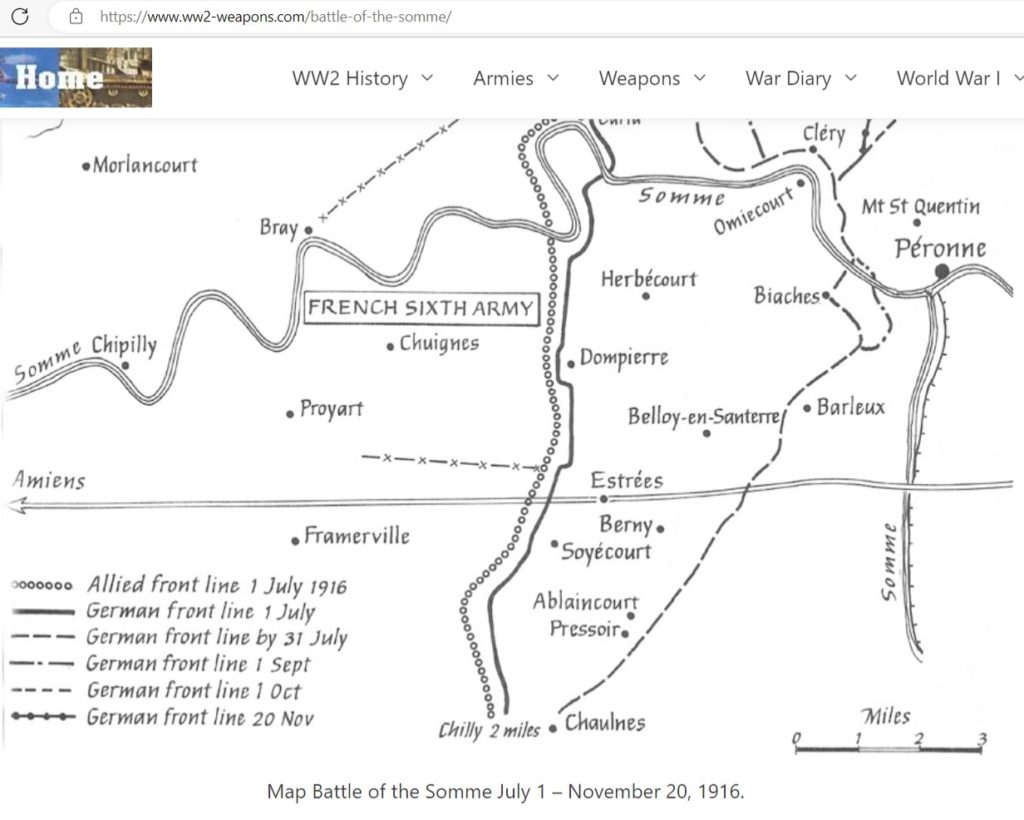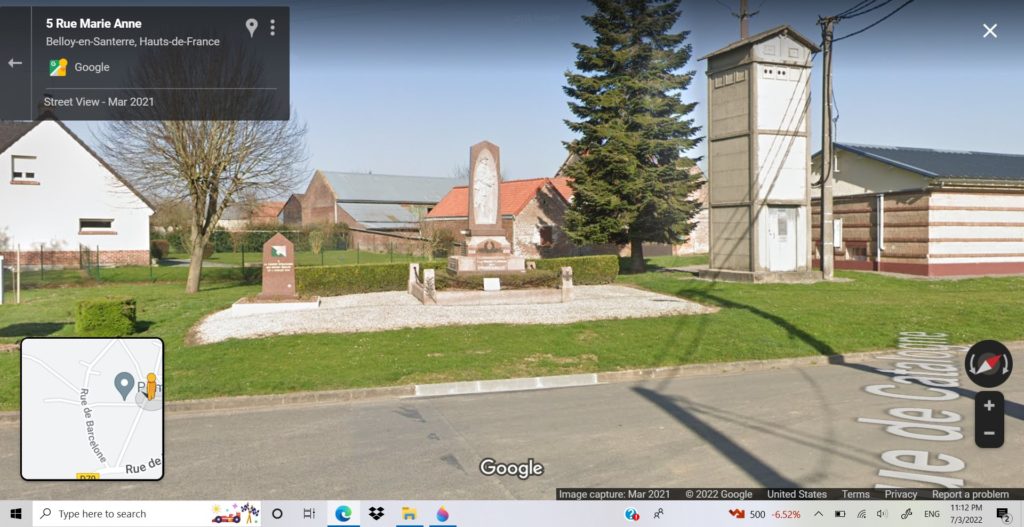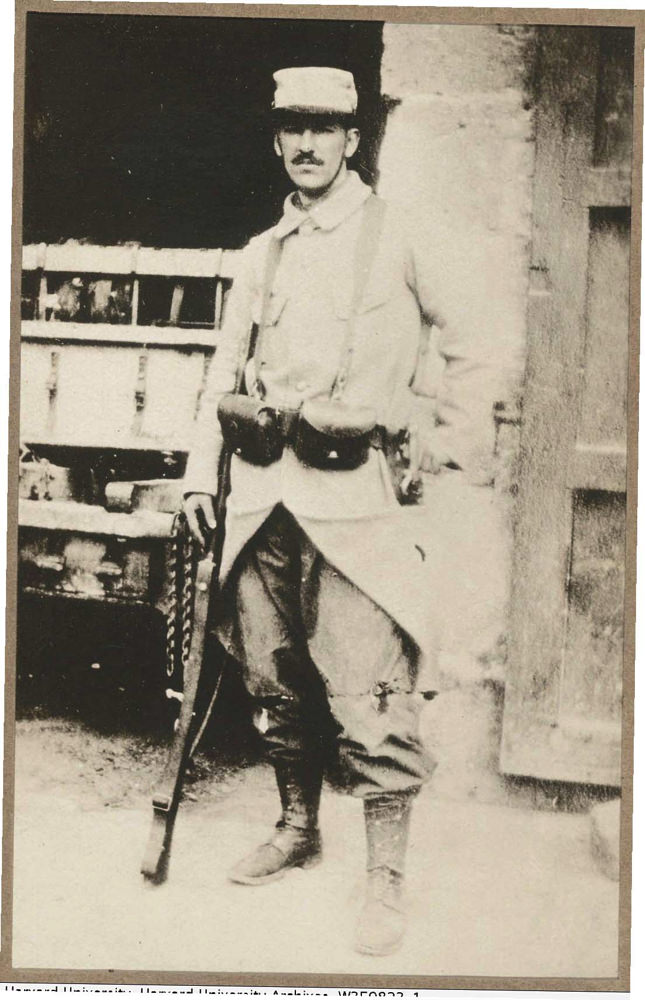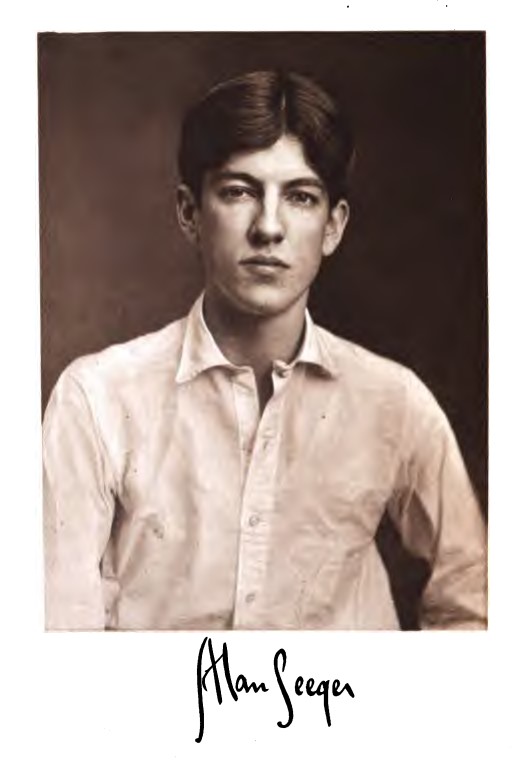On 4 July 1916 America’s best-known WW1 war poet, Alan Seeger, would have his “Rendezvous with Death,” even though the now-famous poem would not be published until after his death in 1917.
Seeger was born in New York City in 1888 and graduated from Harvard University with a Bachelor of Arts degree in 1910. A 2016 article on his life, published in Harvard Magazine, suggests that Seeger’s social life and passion for poetry grew as an upper classman, in part because he served as editor of literary magazine, The Harvard Monthly. After graduation he moved to New York City to try his hand at writing before ultimately moving to Paris, France, with the same intention.
When war broke out in 1914, Seeger became an ardent supporter of the French cause, joining the French Foreign Legion within the first weeks of the war. All the while fighting, he was also writing poetry, sending letters to friends and writing dispatches to American Newspapers, hoping to sway a reluctant United States of America to support the French and to enter the conflict.

In late June / early July 1916 Seeger’s regiment formed part of la Division du Maroc (1re D.M.), part of General Fayolles’ VIe Armée, which was just south of the Somme River, and which participated in the Anglo-French Somme Offensive. The regiment left Bayonvillers the night of 30 June – 1 July and moved closer to the action. It advanced through Proyart and then moved to Fontaine-les-Cappy. Rif Baer, an Egyptian friend of Alan Seeger, stated that, “Alan was beaming with joy and full of impatience for the order to join the action.” (Letters and Diary, page 213.) The regiment then moved toward Assevillers, where it was to relieve the Colonial troops that had just taken that village.
Rif Baer would continue: “About 4 o’clock [on 4 July] the order came to get ready for the attack… The first section (Alan’s section) formed the right and vanguard of the company and mine formed the left wing. After the first bound forward, we lay flat on the ground, and I saw the first section advancing beyond us and making toward the extreme right of the village of Belloy-en-Santerre. I caught sight of Seeger and called to him making a sign with my hand. He answered with a smile. How pale he was! His tall silhouette stood out on the green of the cornfield. He was the tallest man in his section. His head erect, and pride in his eye, I saw him running forward, with bayonet fixed. Soon he disappeared and that was the last time I saw my friend.” (Letters and Diary, pp. 214-5.)
Another participant would describe the attack for the Parisian newspaper La Liberté: “The men hurry on, clutching tightly their arms; some set their teeth, others shout. Three hundred metres yet to cross and they will reach the enemy… En avant! But suddenly, hands relax their grasp, arms open, bodies stagger and fall as the clatter of the German mitrailleuses [machine guns] spreads death over the plain where, but a moment before, men were passing. Hidden in the road from Estrées to Belloy, they have taken our men in flank, cutting to pieces the 11th company.” (Letters and Diary, p. 215.)
The regiment would take Belloy-en-Santerre that day, but after surviving the war for almost two years as a Legionnaire, poet and activist Alan Seeger would find his “Rendezvous with Death” in that attack, just a few kilometers south of the Somme River.

I Have a Rendezvous with Death by Alan Seeger
I have a rendezvous with Death
At some disputed barricade,
When Spring comes back with rustling shade
And apple-blossoms fill the air—
I have a rendezvous with Death
When Spring brings back blue days and fair.
It may be he shall take my hand
And lead me into his dark land
And close my eyes and quench my breath—
It may be I shall pass him still.
I have a rendezvous with Death
On some scarred slope of battered hill,
When Spring comes round again this year
And the first meadow-flowers appear.
God knows ’twere better to be deep
Pillowed in silk and scented down,
Where Love throbs out in blissful sleep,
Pulse nigh to pulse, and breath to breath,
Where hushed awakenings are dear …
But I’ve a rendezvous with Death
At midnight in some flaming town,
When Spring trips north again this year,
And I to my pledged word am true,
I shall not fail that rendezvous.

Post Scripts:
Readers can find additional information on Seeger, his poetry and his life in Dr. Connie Ruzich’s Behind Their Lines WW1 poetry blog, in the 2016 Harvard Magazine article and in Paris Through the Window website.
Seeger’s death helped to cement his fame. He was posthumously awarded the Croix de Guerre and Medaille Militaire. His death was mourned by newspapers and magazines across the United States and his books would become instant hits. Poems, would be published by Charles Scribner’s Sons, NY, 1916, and his Letters and Diary by the same publisher in 1917.
In addition, a bronze statue of Seeger stands atop the Memorial to American Volunteers in the Place des Etats-Unis in Paris, along with the last three lines from his poem, Ode in Memory of the American Volunteers Fallen for France.
“Hail, brothers, and farewell; you are twice blest, brave hearts,
Double your glory is who perished thus,
For you have died for France and vindicated us.”
The memorial was dedicated in 1923 by Raymond Poincare.
#KDIH #kneedeepintohistory #ww1tours #somme #battlefieldtours

Leave a Reply